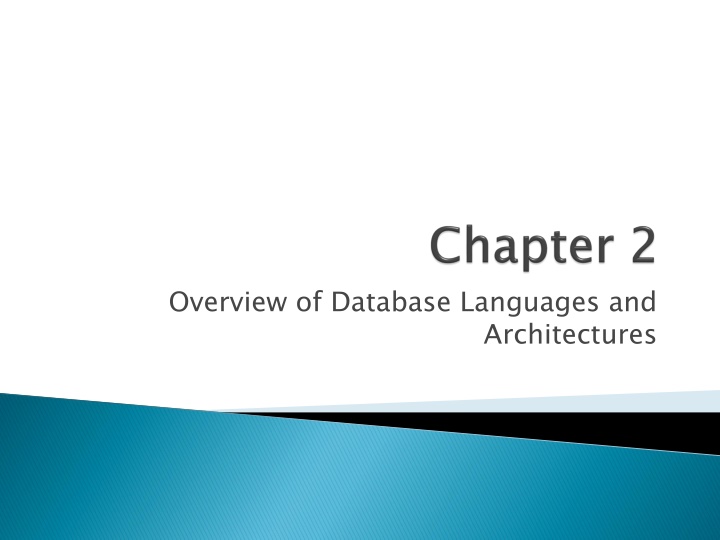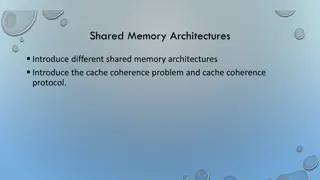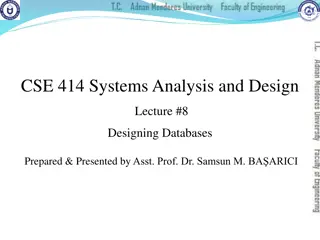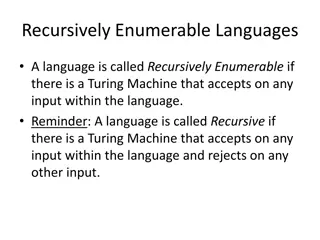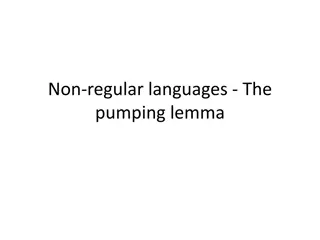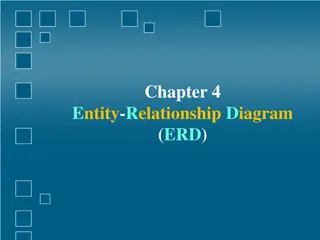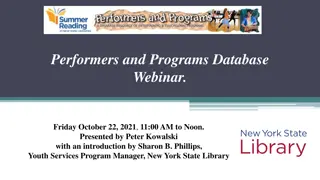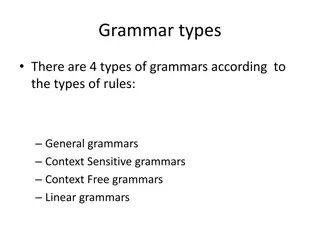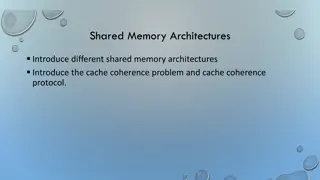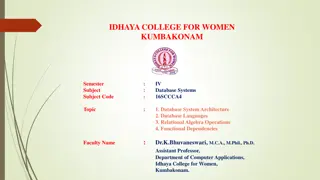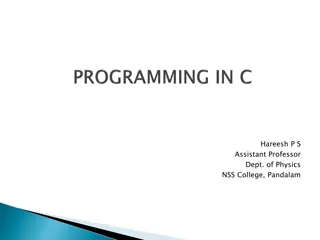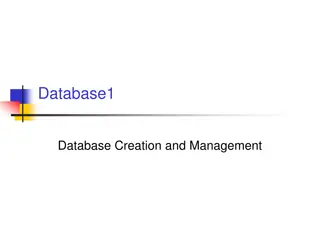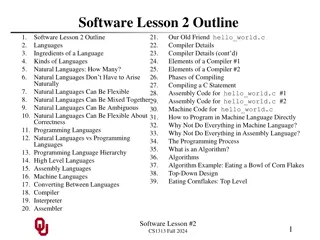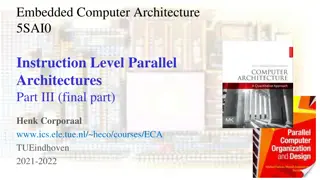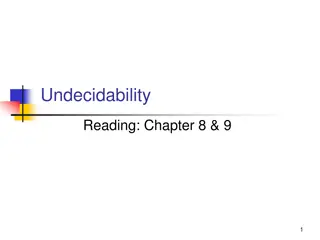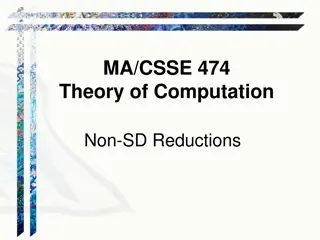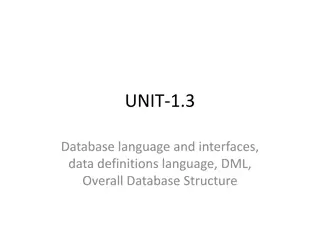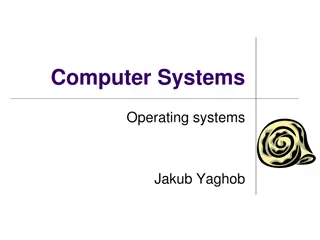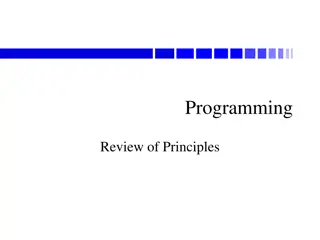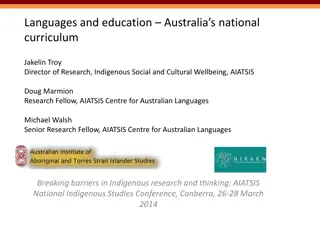Overview of Database Languages and Architectures
In this overview, you will discover data models, schemas, instances, and various database system environments including centralized and client/server architectures. Explore the fundamentals of client/server DBMS architecture, data abstraction, data modeling, entities, relationships, relational data models, and database schemas. Gain insights into the backbone of database systems with a focus on essential features and dynamic aspects.
Download Presentation

Please find below an Image/Link to download the presentation.
The content on the website is provided AS IS for your information and personal use only. It may not be sold, licensed, or shared on other websites without obtaining consent from the author.If you encounter any issues during the download, it is possible that the publisher has removed the file from their server.
You are allowed to download the files provided on this website for personal or commercial use, subject to the condition that they are used lawfully. All files are the property of their respective owners.
The content on the website is provided AS IS for your information and personal use only. It may not be sold, licensed, or shared on other websites without obtaining consent from the author.
E N D
Presentation Transcript
Overview of Database Languages and Architectures
Data Models, Schemas, and Instances The Database System Environment Centralized and Client/Server Architectures for DBMSs Classification of Database Management Systems
Basic client/server DBMS architecture Client module Server module Client module Server module
Data abstraction Suppression of details of data organization and storage Highlighting of the essential features for an improved understanding of data Data abstraction
Data model Collection of concepts that describe the structure of a database Provides means to achieve data abstraction Basic operations Specify retrievals and updates on the database Dynamic aspect application Allows the database designer to specify a set of valid operations allowed on database objects Data model Basic operations Dynamic aspect or behavior behavior of a database
Entity Represents a real-world object or concept Attribute Represents some property of interest Further describes an entity Relationship Represents an association among the entities Entity Entity Attribute Relationship among two or more entities Entity- -Relationship model Relationship model
Relational data model Used most frequently in traditional commercial DBMSs Relational data model
Database schema Description of a database Schema diagram Displays selected aspects of schema Database state Data in database at a particular moment in time Database schema Schema diagram Database state or snapshot snapshot
Define Specify database schema to the DBMS Initial state Populated Valid state Satisfies the structure and constraints specified in the schema Define a new database Initial state Populated or loaded Valid state loaded with the initial data
Schema evolution Changes applied to schema as application requirements change Schema evolution
Loading Load existing data files Backup Creates a backup copy of the database Loading Backup
Database storage reorganization Reorganize a set of database files into different file organizations Performance monitoring Monitors database usage and provides statistics to the DBA Database storage reorganization Performance monitoring
Centralized DBMSs Architecture All DBMS functionality, application program execution, and user interface processing carried out on one machine Centralized DBMSs Architecture
Servers File server Maintains the files of the client machines. Printer server Connected to various printers; all print requests by the clients are forwarded to this machine Web Servers with specific functionalities File server Printer server Web servers servers or e e- -mail mail servers servers
Client machines Provide user with: Appropriate interfaces to utilize these servers Local processing power to run local applications Client machines
Client User machine that provides user interface capabilities and local processing Server System containing both hardware and software Provides services to the client machines Such as file access, printing, archiving, or database access Client Server
Server handles Query and transaction functionality related to SQL processing Client handles User interface programs and application programs
Open Database Connectivity (ODBC) Provides application programming interface (API) Allows client-side programs to call the DBMS Both client and server machines must have the necessary software installed JDBC Allows Java client programs to access one or more DBMSs through a standard interface
Application server Adds intermediate layer between client and the database server Runs application programs and stores business rules N-tier Divide the layers between the user and the stored data further into finer components Application server or Web server Web server
Data model Relational Object Hierarchical Native XML DBMS Number of users Single Multiuser Data model Relational Object Hierarchical and network Native XML DBMS Number of users Single- -user Multiuser network (legacy) user
Number of sites Centralized Distributed Homogeneous Heterogeneous Cost Open source Different types of licensing Number of sites Centralized Distributed Homogeneous Heterogeneous Cost
Concepts used in database systems Main categories of data models Interfaces provided by the DBMS DBMS classification criteria: Data model, number of users, number of sties, access paths, cost
